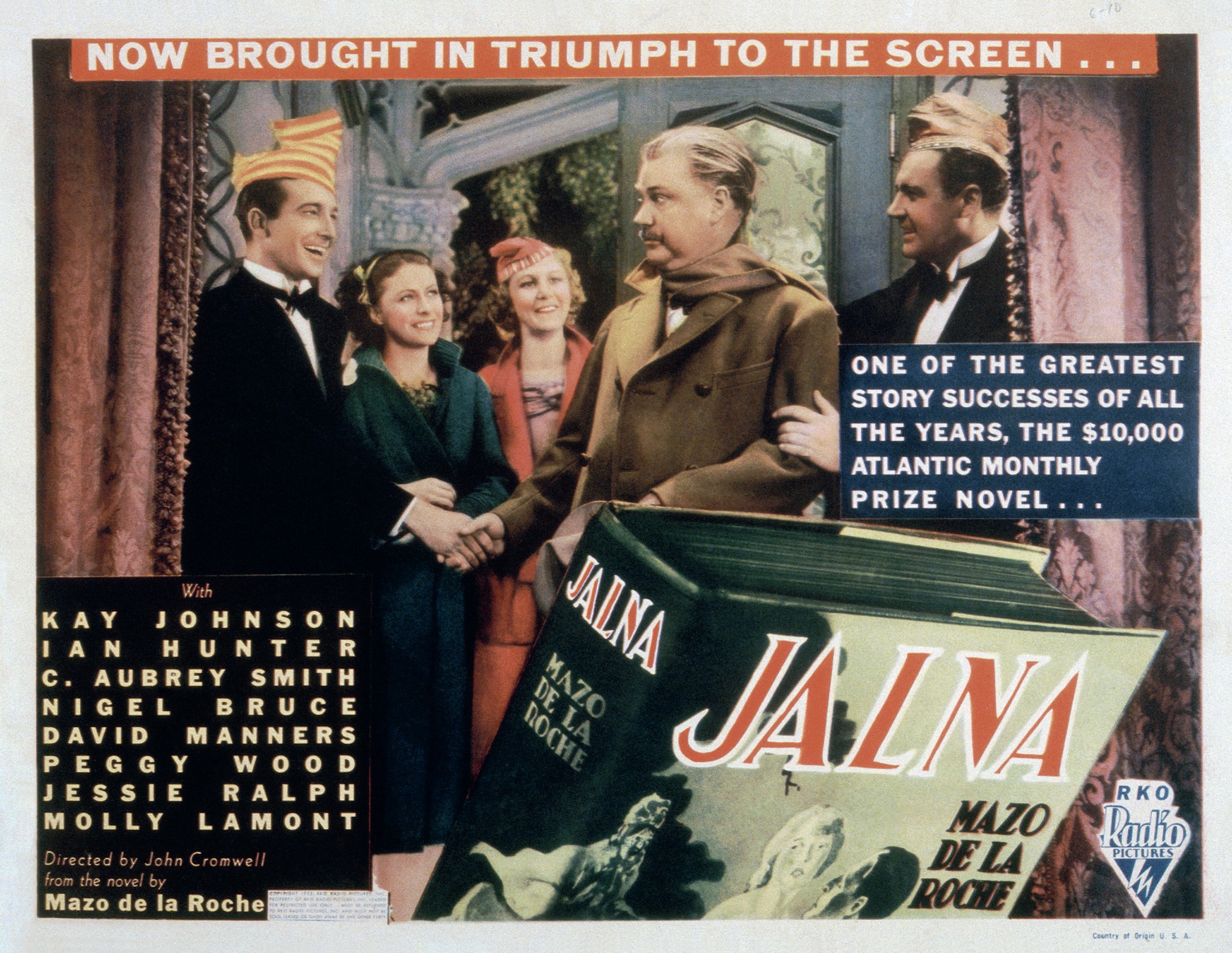
Margaret Atwood describes Mazo de la Roche (1893–1961) as ‘among several Canadian woman writers of the twentieth century who emerged from unlikely backgrounds to become internationally known in their day’ (Atwood 2015). Born (like Atwood herself) in the Canadian province of Ontario, de la Roche wrote 16 Whiteoaks novels between 1927 and 1960. Her big break came when the lynchpin of this family saga, Jalna, won a $10,000 literary prize awarded by the prestigious Atlantic Monthly magazine. According to the critic Ruth Panofsky, the patriotic rush to declare Jalna a work of serious literary merit reflected the astonishing international triumph of an obscure Canadian writer rather than the text’s own intrinsic merit. De la Roche’s critical reputation did not last (Panofsky 2000, p. 59).
As with many bestselling writers, the drive to produce a stream of sequels saw de la Roche begin to write to a more generic and franchised formula after her success with Jalna. Her melodramatic themes — romance, family crises, births, marriages and deaths — were dismissed as typical of ‘women’s writing’, and as her sales soared, her work came to be seen as increasingly unworthy of serious critical attention. Yet, as the literary historian Nicola Beauman has noted, the ‘“woman’s novel” between the wars was usually written by middle-class women for middle-class women … [and when] time hung heavy on many women’s hands … novel reading was one of life’s chief pleasures’ (Beauman 1982, p. 3 and p. 5). The once rather brutal dismissal of writing for women by women has now given way to a more nuanced critical evaluation that frames texts carefully within their specific social and cultural contexts.
Your organisation does not have access to this article.
Sign up today to give your students the edge they need to achieve their best grades with subject expertise
Subscribe




